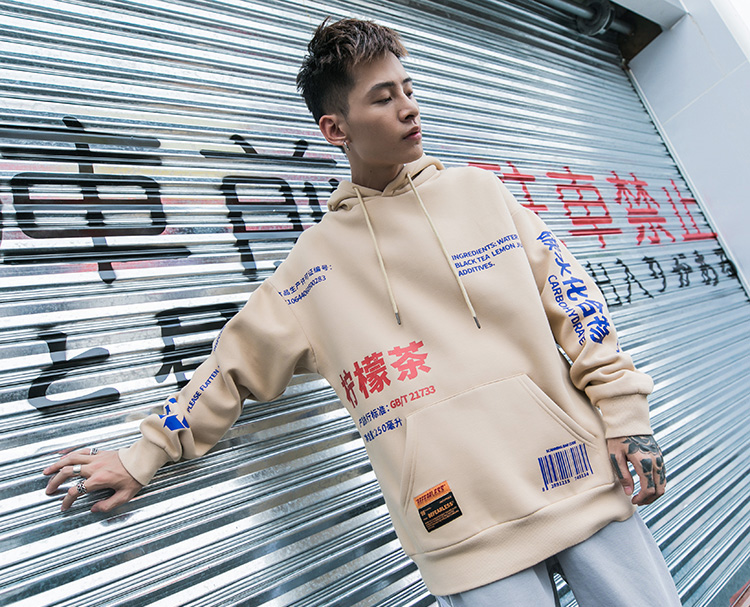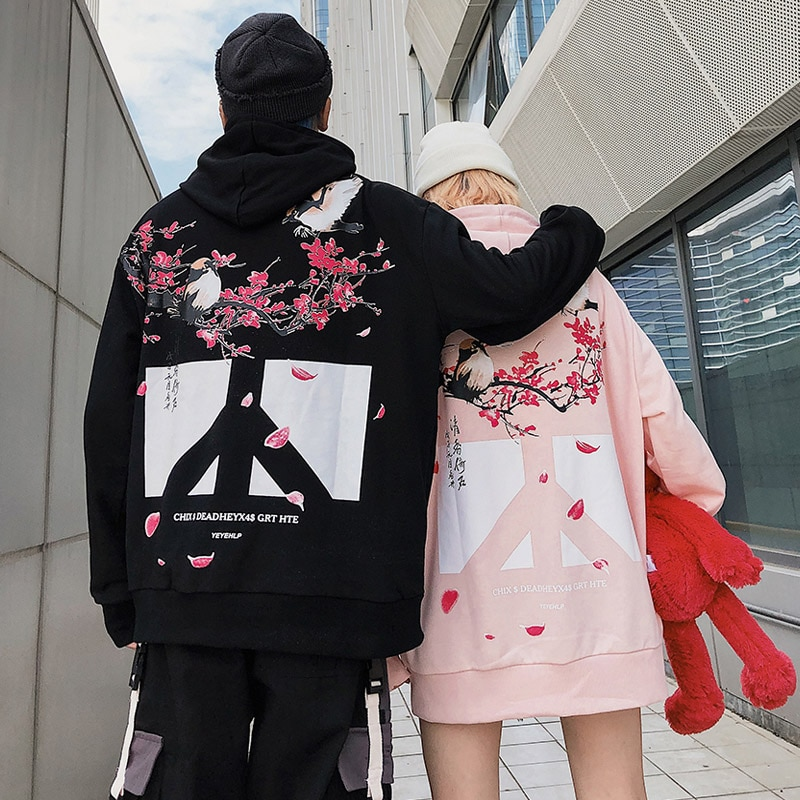Is streetwear dead ?
Oct 07, 2023
Is Streetwear Dead? Exploring What's Next in the Fashion Scene
Is streetwear dead? Or is it just evolving? In today’s ever-changing fashion landscape, this question has sparked heated debates among fashion enthusiasts, designers, and industry insiders alike. Get ready to embark on a fascinating journey as we explore the past, present, and future of streetwear, and delve into the role of iconic designers and the rise of Korean streetwear in shaping the fashion scene.
Key Takeaways
- The debate continues as to whether streetwear is still a driving force in fashion or has lost its edge.
- Iconic designers have been integral to the success of streetwear, merging it with high fashion and collaborating with other brands.
- Streetwear needs to stay ahead by adapting trends, prioritizing sustainability & ethical production for continued relevance.
The Great Streetwear Debate: Dead or Alive?

Born in the 70s, streetwear was the love child of hip-hop, skateboarding, and popular culture, known for its comfy, laidback fit, and bold graphic designs, particularly on t-shirts. Today, streetwear pieces continue to be influenced by these roots, with a focus on unique and eye-catching designs.
Today, the debate rages on: is streetwear dead, or is it still a driving force in the fashion industry? Some argue that the term has lost its edge, while others point to its ongoing influence and adaptability to new tastes and trends.
We will now explore the entire thing, including arguments presented by both sides.
The "Streetwear is Dead" Argument

Critics of streetwear claim that it has become corporatized, with the release and resale market catering to the monied consumer. Luxury fashion brands like Louis Vuitton have embraced streetwear elements, diluting its rebellious spirit and transforming it into a more exclusive market. This shift has led some to declare that streetwear is dead, a mere shadow of its former self.
However, the counterargument suggests that streetwear is far from dead, but rather evolving and adapting to the changing landscape of fashion.
The Counterargument: Streetwear's Ongoing Influence
Defying the naysayers, streetwear continues to thrive with fresh labels like Corteiz and Free The Youth showcasing street culture’s enduring influence on fashion. The word streetwear-ification of high-end fashion has seen luxury brands incorporate bold graphics, oversized clothing, and sneakers into their designs, further blurring the lines between streetwear and luxury.
So, has streetwear lost its relevance? Absolutely not. It will remain a significant influence in the fashion world as long as innovators keep pushing the boundaries and mixing styles.
The Evolution of Streetwear Culture

Tracing its roots back to the New York hip-hop scene and influenced by Californian and Japanese fashion, streetwear has come a long way. Over time, it has evolved, borrowing elements from sportswear, punk, and surf culture, becoming a unique form of self-expression.
From its humble beginnings on the streets, streetwear has infiltrated the runways and the luxury fashion world. We will now examine this intriguing transformation more closely.
From Streets to Runways
The journey of streetwear from the streets to the runways is an incredible story of creativity and innovation. In the 80s, Shawn Stüssy made a splash with his unique t-shirt designs, setting the stage for designers like Virgil Abloh and Raf Simons to incorporate streetwear elements into their collections. Today, streetwear is a staple on the runways, constantly evolving and influencing the fashion industry.
It’s not only the high-end fashion industry that has adopted streetwear. Luxury brands too, have come on board, giving rise to a novel breed of fashion that merges streetwear with luxury.
Luxury Brands Embracing Streetwear
Luxury fashion labels like A Bathing Ape (BAPE), Off-White, and Heron Preston have all embraced streetwear, incorporating its elements into their designs. In doing so, they have opened up the fashion scene to a wider audience and created more opportunities for self-expression.
The partnership between streetwear and luxury fashion has given rise to a new style, blending high-end and streetwear in a way that’s both fashionable and accessible.
The Role of Iconic Designers in Streetwear's Success
Iconic designers have played a pivotal role in the success and evolution of streetwear. Names like Supreme, Off-White, and Heron Preston have become synonymous with the style, turning it into high fashion and collaborating with other brands.
From transforming streetwear with their innovative designs to partnering with other creatives, iconic designers have left a lasting impression on the fashion scene.
Turning Streetwear into High Fashion
Designers such as Virgil Abloh, Jun Takahashi, and Shawn Stussy have transformed streetwear into high fashion by blending its elements with high-end designs. Their inventive creations have bridged the gap between streetwear and the world of haute couture, gaining recognition and acceptance in the fashion industry.
The result is a unique style that strikes a balance between fashion-forward design and the laidback vibe of streetwear.
Collaborations and Crossovers
Collaborations and crossovers are a hallmark of streetwear, with iconic designers joining forces with other brands and designers to create unique, limited edition pieces. These partnerships have not only led to imaginative and inventive designs but also increased exposure for the brands involved.
As the landscape of fashion continues to transform, collaborations and crossovers will persist as a key component, paving the way for fresh, unique designs and enhanced visibility.
Korean Streetwear: A New Trend on the Rise
Enter Korean streetwear, the latest trend to take the fashion world by storm. Known for its bright colors, oversized silhouettes, and creative graphics, Korean streetwear offers a unique blend of traditional and modern elements, such as traditional Korean motifs and modern streetwear trends.
Characterized by bold aesthetics and inventive designs, Korean streetwear is rapidly gaining traction and drawing the attention of fashion aficionados across the globe.
What Sets Korean Streetwear Apart
Korean streetwear stands out with its daring graphics, distinct silhouettes, and a combination of Eastern and Western influences. It pushes the boundaries of conventional streetwear, incorporating unisex clothing concepts and drawing inspiration from both traditional Korean elements and global fashion trends.
This distinctive fusion of traditional and contemporary has endowed Korean streetwear with a unique identity, differentiating it from other streetwear trends.
Popular Korean Streetwear Brands
Some of the most popular Korean streetwear brands, such as IISE, Pushbutton, and Beyond Closet, showcase the eclectic mix of styles that define Korean street fashion. These brands are known for their vibrant colors, striking patterns, and distinctive silhouettes, often incorporating traditional Korean elements like hanbok and hanji.
As Korean streetwear continues to gain popularity, these brands and others are poised to shape the global fashion scene for years to come.
The Future of Streetwear: What's Next?
As the world of fashion continues to evolve, so too will streetwear. To stay relevant, streetwear will need to adapt to the changing tastes and trends in popular culture, technology, and the power of celebrities and influencers.
In addition to embracing these changes, the future of streetwear will also involve a greater focus on sustainability and ethical production.
Adapting to Changing Tastes and Trends
In order to remain relevant in the dynamic fashion landscape, streetwear brands will need to innovate with new materials, designs, and silhouettes, while also forming collaborations with influencers and celebrities. Luxury brands have already started integrating streetwear into their portfolios, adopting its elements in their designs and partnering with streetwear brands to craft exclusive pieces.
By staying on the cutting edge and welcoming change, streetwear brands can continue to influence the fashion scene and maintain their relevancy in the future.
The Role of Sustainability and Ethical Production
As consumers become more aware of the environmental and social impacts of their clothing choices, sustainability and ethical production will play an increasingly important role in the future of streetwear. Brands will need to embrace practices such as using sustainable materials like organic cotton and ensuring their factories comply with labor laws.
By giving precedence to sustainability and ethical production, streetwear brands can not only sustain their leadership but also contribute towards a more responsible and eco-friendly fashion industry.
Summary
So, is streetwear dead? Not by a long shot. As we’ve seen, streetwear continues to evolve and adapt, influenced by iconic designers, the rise of Korean streetwear, and the ever-changing tastes and trends in fashion. With a growing focus on sustainability and ethical production, streetwear is set to remain a powerful force in the fashion world for years to come.
Frequently Asked Questions
Is street wear dying?
It appears streetwear is here to stay, having become a fashion staple much like denim. It is still thriving despite the many changes it has gone through over time.
What is the future of the streetwear industry?
The streetwear industry has been growing exponentially over the last few decades and is estimated to reach USD 230877.25 million in 2028. The popularity of streetwear continues to surge as its casual style has gained worldwide appeal since it first became popular in the 1990s.
How has streetwear evolved over time?
Streetwear has evolved over time by taking elements from various cultures and trends, blending sportswear, punk, surf, high-fashion and luxury items to create a unique style.
What is Korean streetwear?
Korean streetwear is a blend of traditional aesthetics and modern innovation, embracing South Korean culture and remaining ahead of fashion trends.
What is the role of iconic designers in streetwear's success?
Iconic designers have been instrumental in making streetwear the phenomenon it is today, through their work in transforming it into high fashion, collaborating with brands, and continuously innovating with fresh ideas.



